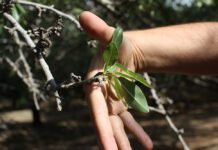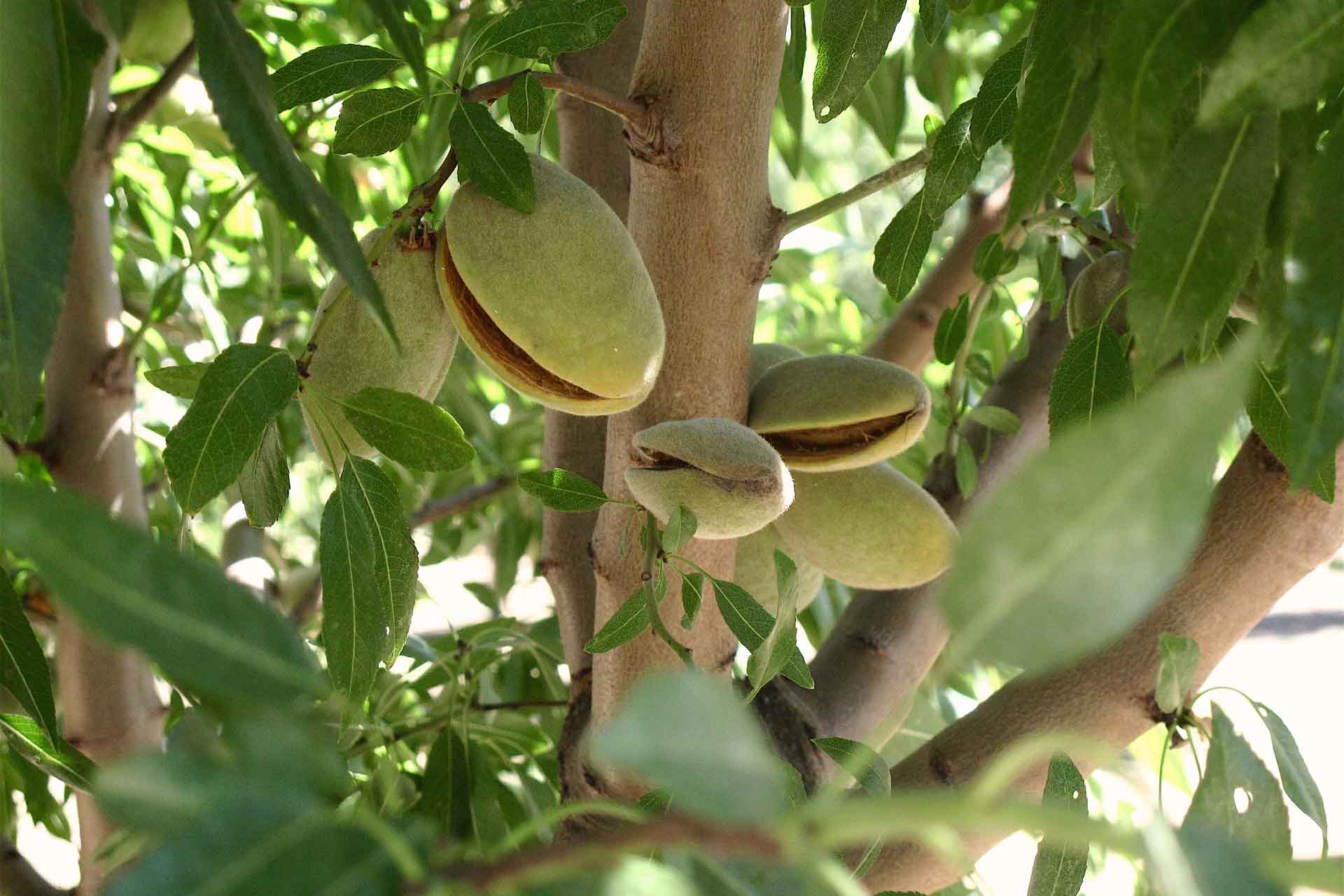
Research on nitrogen (N) management in almonds over the past decade has revealed application practices that can be beneficial on a three-pronged approach – benefits to the tree, to the grower’s pocketbook and to the environment.
This subject has been the topic of trials, studies and presentations by the industry’s top authority, Patrick Brown, professor of Plant Nutrition in the Department of Plant Sciences, University of California (UC) Davis. Additional research has been conducted by Franz Niederholzer, University of California Cooperative Extension (UCCE) farm advisor, Colusa and Sutter/Yuba counties and research coordinator at the Nickels Soil Lab in Colusa County.
The goal of any fertilizer management strategy is to ensure that adequate nutrients are available to supply the current demand of the plant.
Niederholzer says N is a key mineral nutrient in almond production throughout California, and its deficiency reduces kernel yield per acre.
Almond nutrient management should focus on ensuring optimal productivity while minimizing the biological, environmental and financial costs from the overuse of fertilizers, according to Brown.
The management of N in orchards can be viewed as a balancing act with the goal of applying sufficient N to supply tree needs for growth and nut production, while maintaining or increasing soil organic nitrogen and minimizing potential loss through leaching or volatilization.
Application of N in excess of the capacity of the almond tree to utilize that N increases the likelihood that nitrate will move below the root zone where it is at risk of being lost to groundwater.
Brown says that the demand for judicious use of N fertilizer to reduce it leaching to groundwater is increasing, which requires that N be applied according to the crop demand, optimizing yield and reducing leaching.
To supply and maintain a balanced concentration of essential nutrients in plants, prediction of nutrient availability from the soil, and monitoring the nutrient status of the plants during the season is necessary.
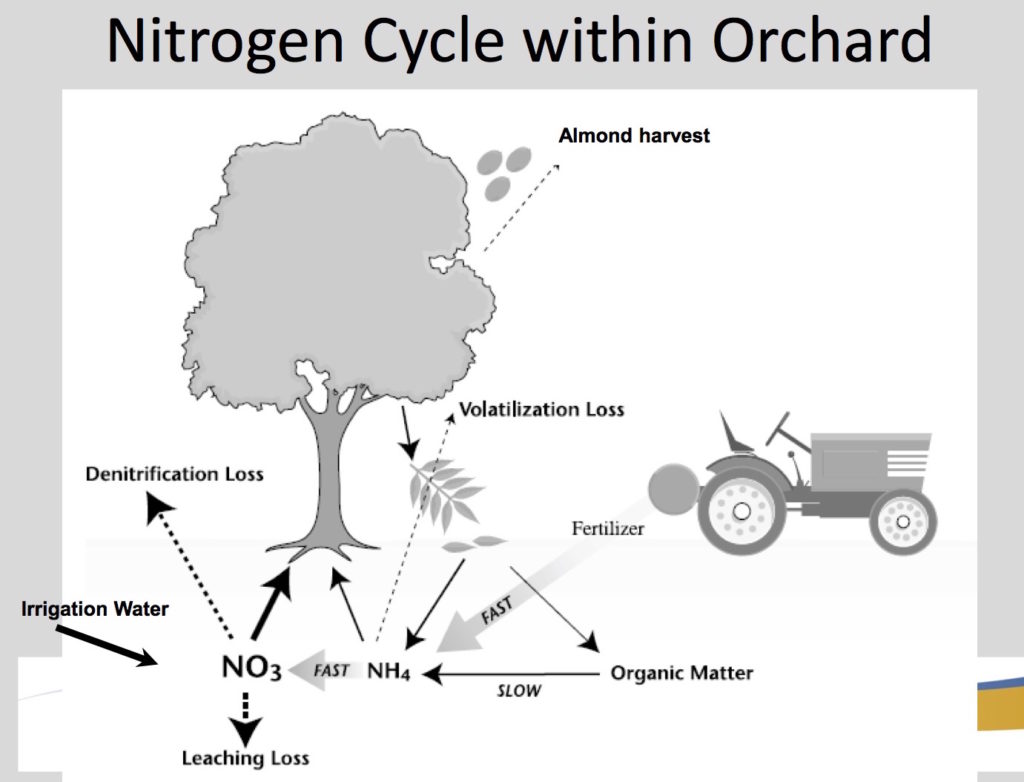
Application Budget
In this year’s Nickels Soil Lab Field Day, Niederholzer shared some of the current trends in N application based on the latest research.
“Most of you are probably familiar with the 20-30-30-20 rule as suggested by UCCE,” he said. “At a minimum nitrogen should be provided in four or more annual fertilization events.”
Niederholzer explains the applications as follows:
-
- Apply 20 percent of the N budget by full leaf out, about the middle of March usually.
- Apply 30 percent of the N budget between full leaf out and shell hardening in April
- Apply 30 percent of the N budget between shell hardening and nut fill, around May to early June.
“This means 80 percent of nitrogen in the tree by kernel fill, which is by the end of May/early June, so you are really just feeding the crop through the first three applications,” Niederholzer said. “You can track this in the trees readily by cutting open and checking the development of the nut.”
- Apply the last 20 percent of N budget hull split through leaf drop, or until three weeks post harvest is reasonable, still noting that trees need to be green and active for them to take up nitrogen.
Trees store nitrogen in woody tissue. Across the entire growing cycle of the mature tree, Niederholzer said, the amount of N in the wood stays about the same, dropping down a little bit early in the season as the N reserves feed into the buds at bloom and soil N hasn’t yet been moved to the growing tissue.
“This is because the trees don’t access soil nitrogen until the canopy fill is and water use really gets going, a month after bloom, and so the trees use nitrogen as built in supply of nitrogen for the first month of the season. But the trees recover from that little dip in the woody tissue later in the spring as they receive sufficient nitrogen through uptake from organic matter, mineralization or fertilizer application,” he added.
Most of the N absorbed from the soil through the season goes into the leaves, shoots and the nuts, with the majority going into the nuts.
“The most critical time for N in almond production is from the middle of March, at full spur leaf-out, to kernel fill, around the first week of June, or depending on the year and weather, maybe a little later. But you can always check by cutting open a kernel to see what stage it is in,” Niederholzer said.
After kernel fill, throwing a lot of nitrogen at a tree isn’t going to get you much, because there is so relatively little use later in the season.
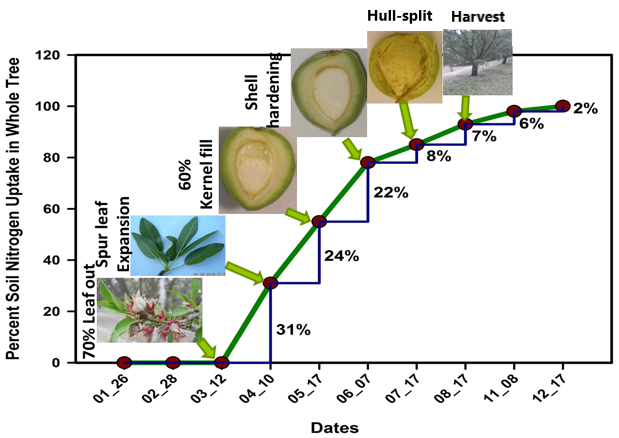
The 4Rs of N
The 4Rs of—Right Rate; Right Time; Right Source; and Right Place—siting research conducted by Brown and his team, Niederholzer shared in a UCCE publication the following information:
Right Rate. The annual fertilizer rate in a mature, producing orchard is mostly determined by crop size, although some N is needed to grow new shoots and spurs for future crops. One thousand pounds of almond kernel yield (hulls, shells, and kernels) per acre in a well fertilized almond orchard contains 68 lbs. N based on extensive field work by Brown and his students at UC Davis. When determining the actual rate of fertilizer N to apply in a particular orchard in a given year, consider both orchard N requirements minus other, non‐fertilizer sources of N such as nitrate in irrigation water. For example, since a crop requires 68 lbs. N per 1,000 lbs. of kernels, a block producing an average crop of 2,600 lbs. of kernels per acre would need 177 lbs. N per acre.
Non‐fertilizer sources of N, including irrigation water should be considered in the calculation of an annual N budget. Finally, when calculating a nitrogen budget for an almond orchard, assume some inefficiency in the process of getting the fertilizer from the soil to the root surface. The current target for nitrogen efficiency in almond production under micro-sprinkler or drip irrigation is 70 percent. That is N removed in the crop relative to nitrogen applied to the crop = efficiency.
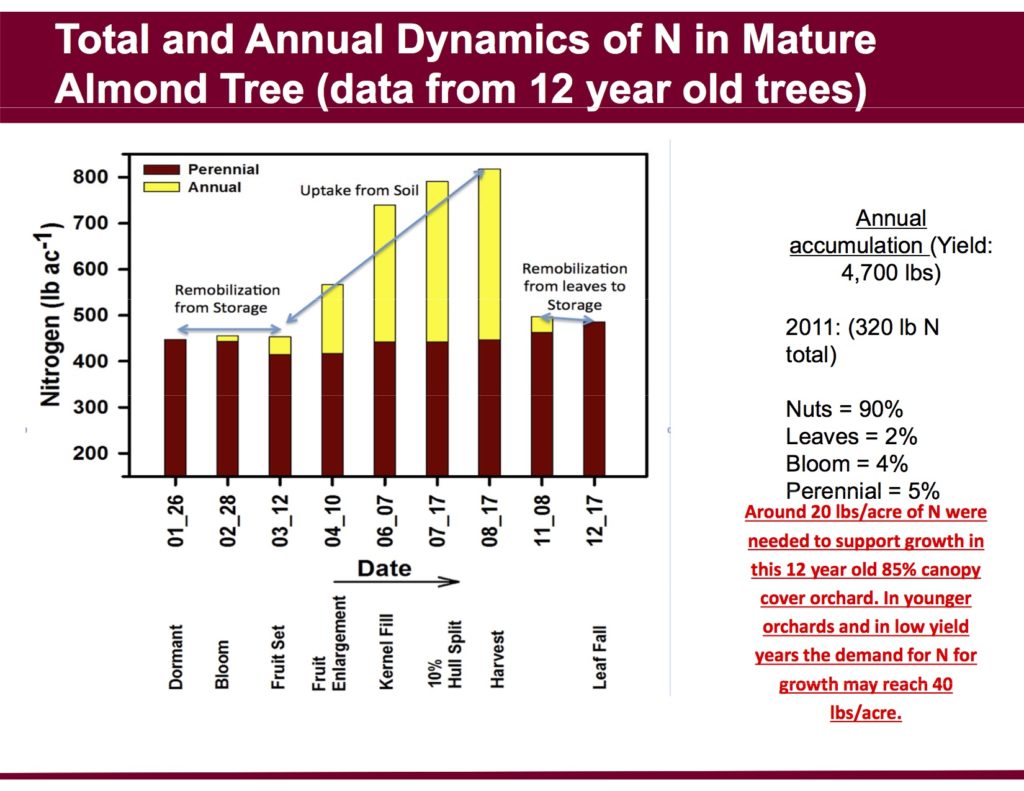
Right Timing. Almond nuts and shoots use the most N (80 percent of annual demand) between bloom and early to mid‐June. To match fertilizer delivery with tree N use, Brown’s group recommends delivering fertilizer N at four different timings and amounts through the season (see information earlier in this article on 20-30-30-20 application budget). Overall, for the best returns and to benefit the environment, Sacramento Valley almond growers should apply most of their annual fertilizer N input in spring/early summer and do everything possible to limit the amount of nitrate in the soil as winter—and the storm season—approaches.
Right Placement. Fertigation delivers fertilizer to active roots. As long as irrigation is managed to deliver only needed water, fertigation can be a highly efficient method of fertilization. Fertilization injection should begin after the halfway point in the irrigation set and allow at least several hurs of clear water application after the injection stops. Injecting fertilizer N, especially when the N sources are nitrate and/or urea, into an irrigation system at the beginning of the set risks moving N deep into the root zone where there are fewer active roots. This risks less N uptake and increased risk of N leaching. Orchards using flood or solid set sprinkler irrigation systems should apply fertilizer N in the herbicide strips along the tree row, not as a general broadcast application.
Right Source. There are a number of N sources available to growers—urea, UAN 32, ammonium sulfate, CAN 17, calcium nitrate as well as composts and organic fertilizers. Liquid materials such as UAN32 and CAN17 are popular. In Brown’s work there has been no significant difference in yield between equal annual amounts of N applied as UAN 32 or CAN17.









